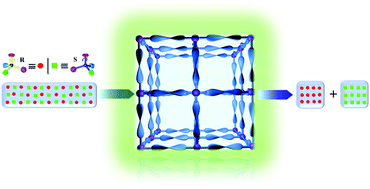Homochiral metal–organic frameworks for enantioseparation
Abstract
Obtaining homochiral compounds is of high importance to human health and environmental sustainability. Currently, enantioseparation is one of the most effective approaches to obtain homochiral compounds. Thanks to their controlled synthesis and high efficiency, homochiral metal–organic frameworks (HMOFs) are one of the most widely studied porous materials to enable enantioseparation. In this review, we discuss the chiral pocket model in depth as the key to unlock enantioselective separation mechanisms in HMOFs. In particular, we classify our discussion of these chiral pockets (also regarded as “molecular traps”) into: (a) achiral/chiral linker based helical channels as a result of packing modality; and (b) chiral pores inherited from chiral ligands. Driven by a number of mechanisms of enantioseparation, conceptual advances have been recently made in the design of HMOFs for achieving high enantioseparation performances. Herein, these are systematically categorised and discussed. Further we elucidate various applications of HMOFs as regards enantioseparation, systematically classifying them into their use for purification and related analytical utility according to the reported examples. Last but not the least, we discuss the challenges and perspectives concerning the rational design of HMOFs and their corresponding enantioseparations.



 Please wait while we load your content...
Please wait while we load your content...